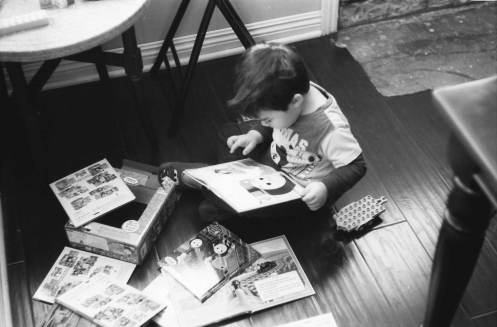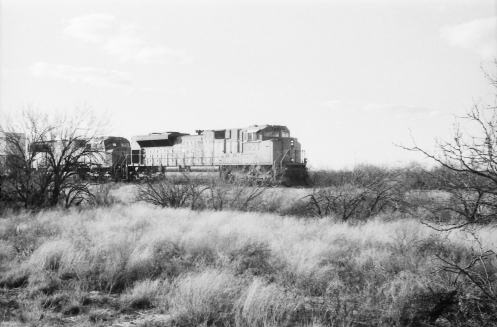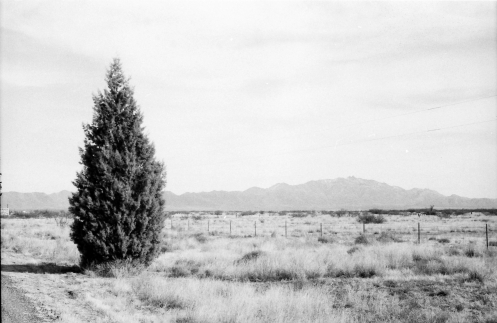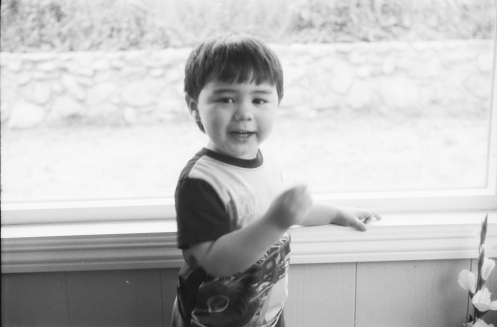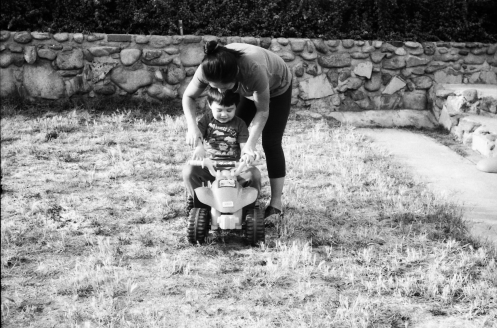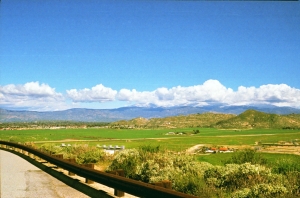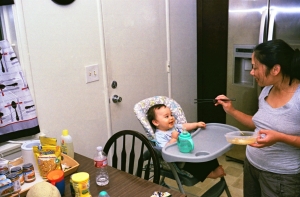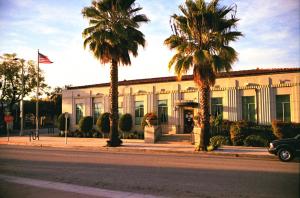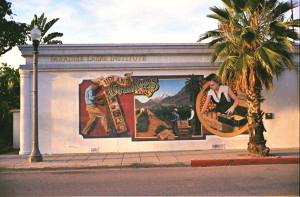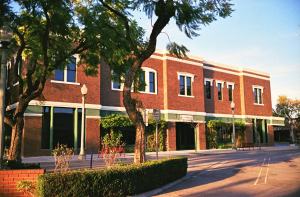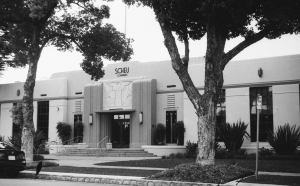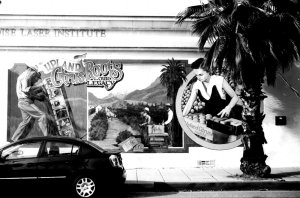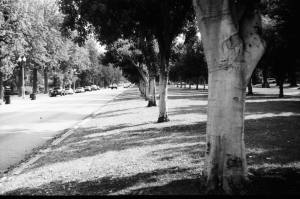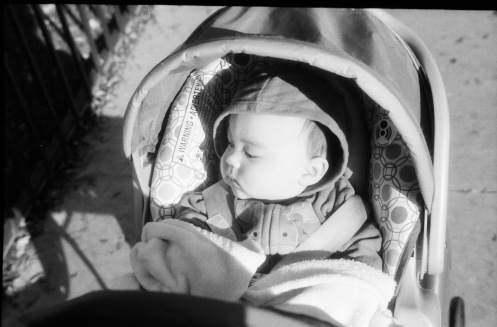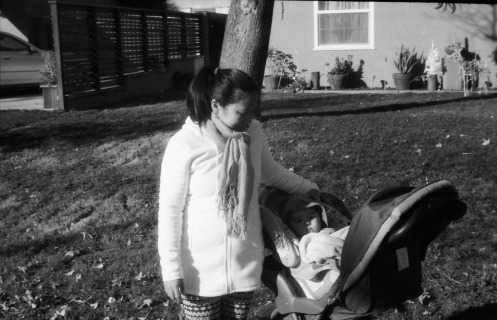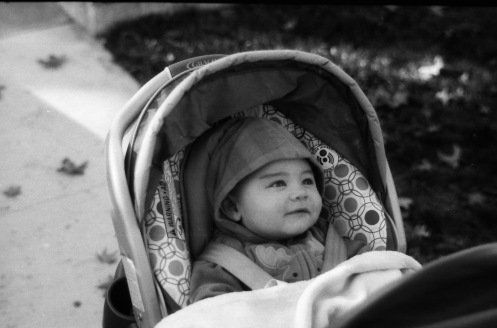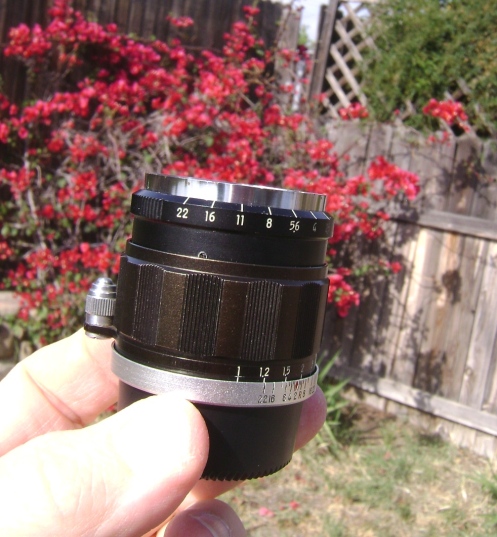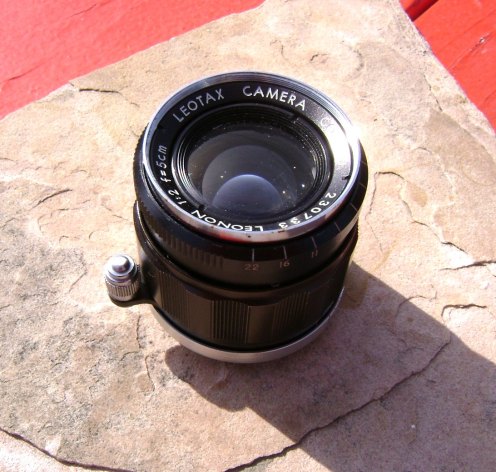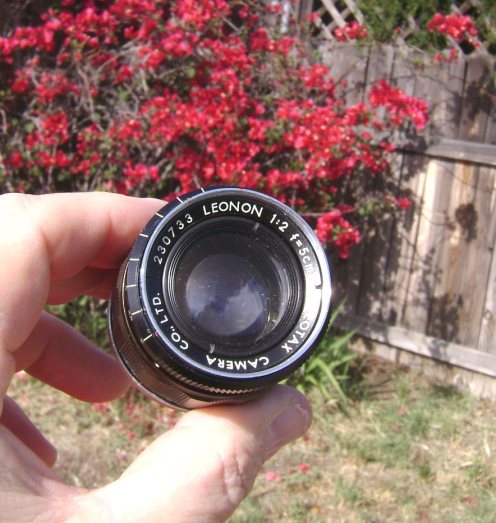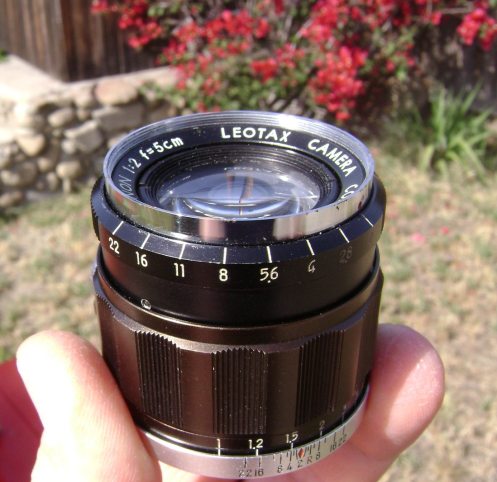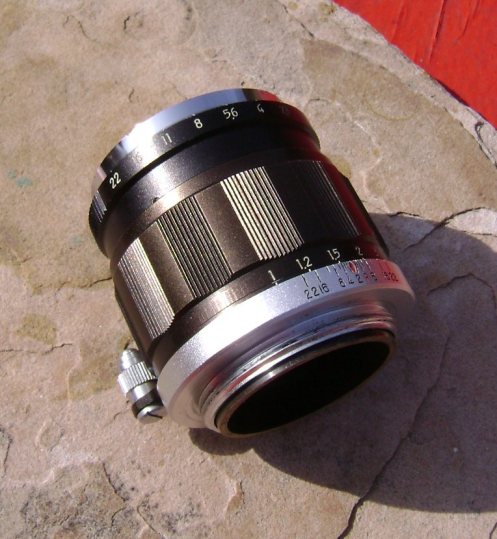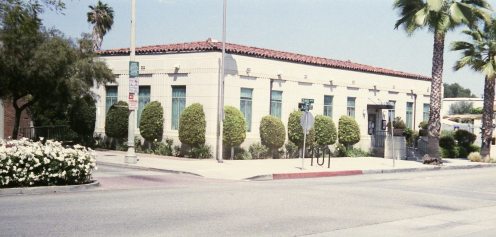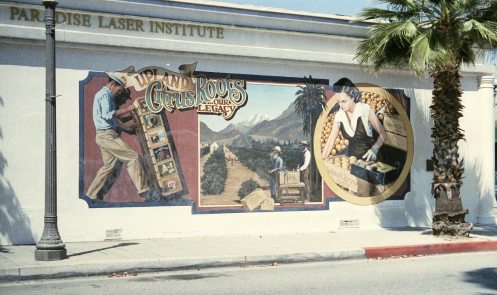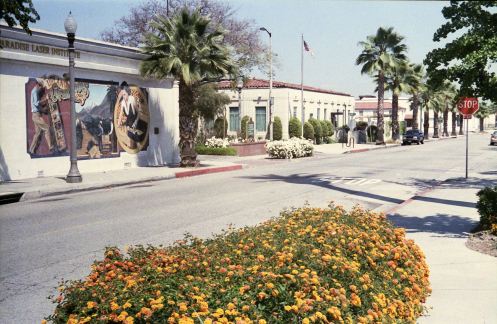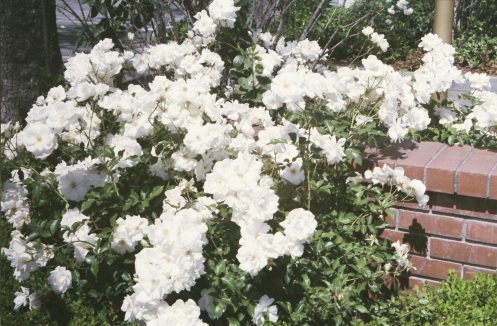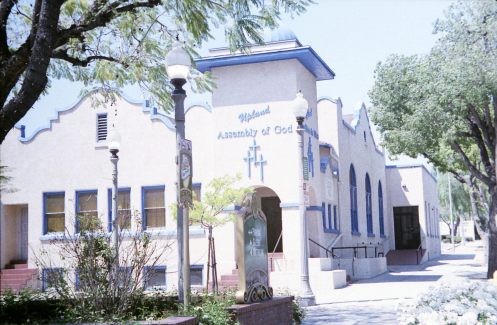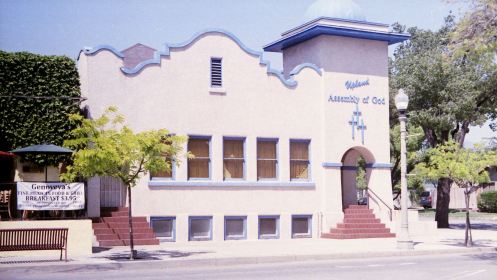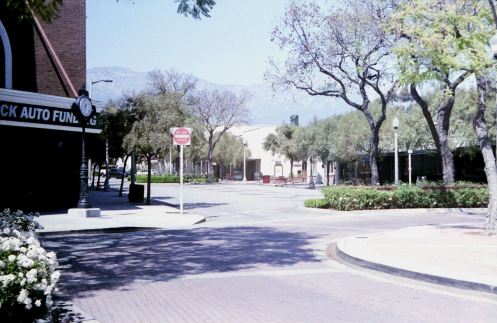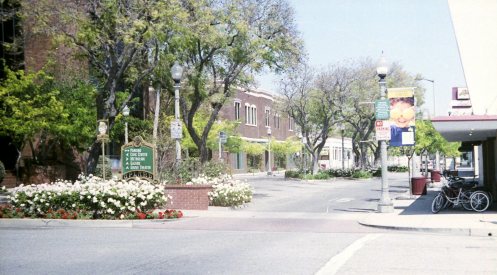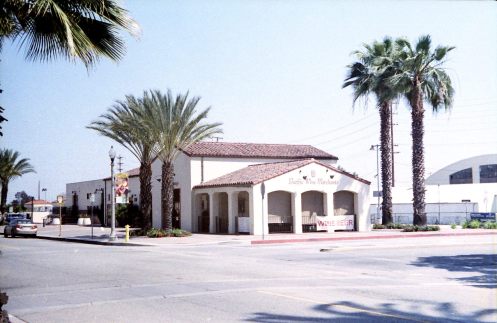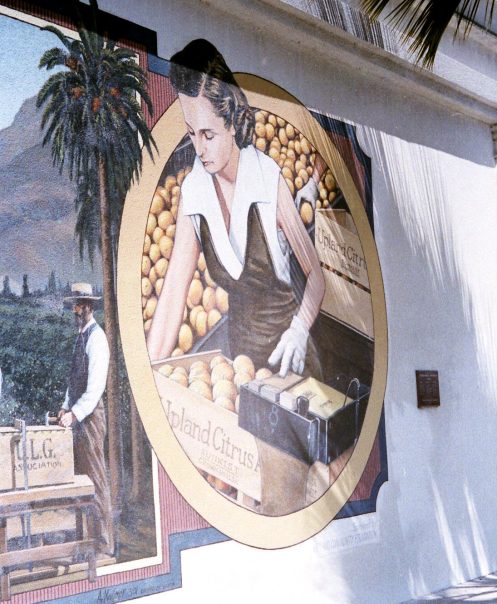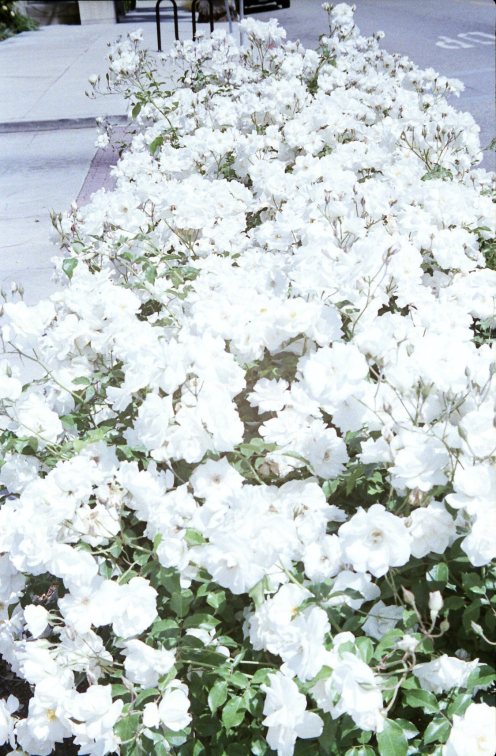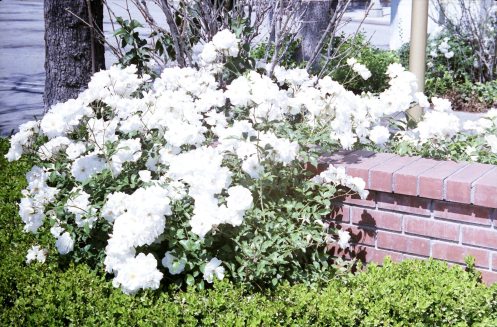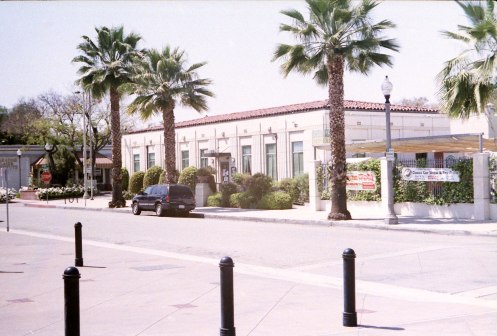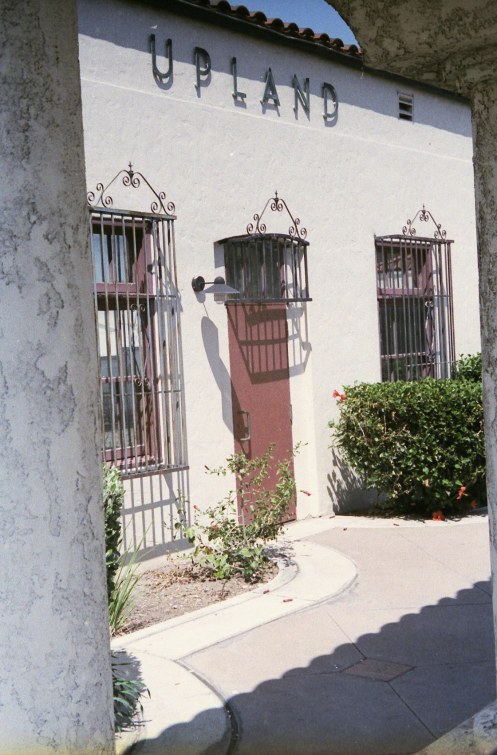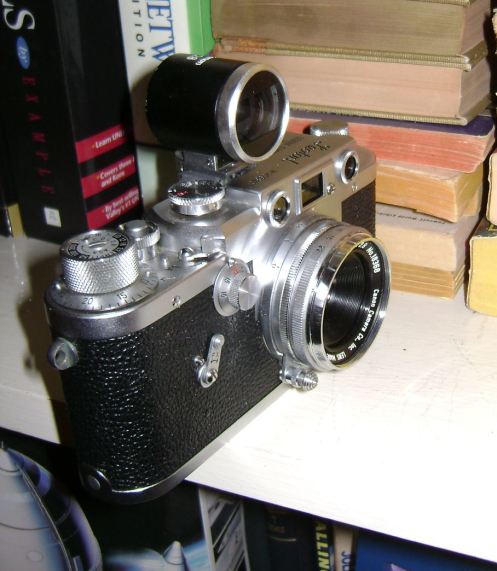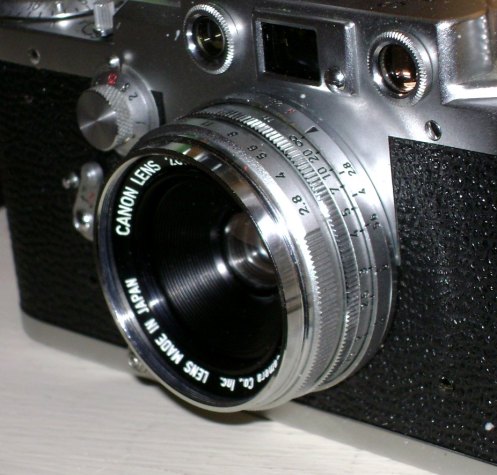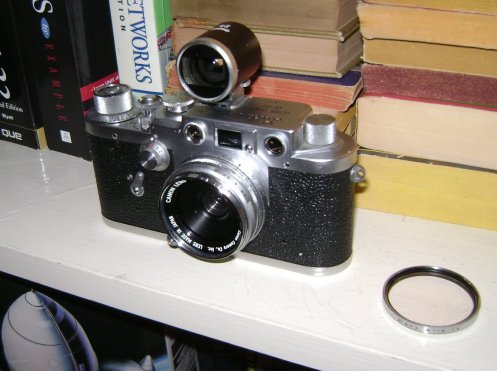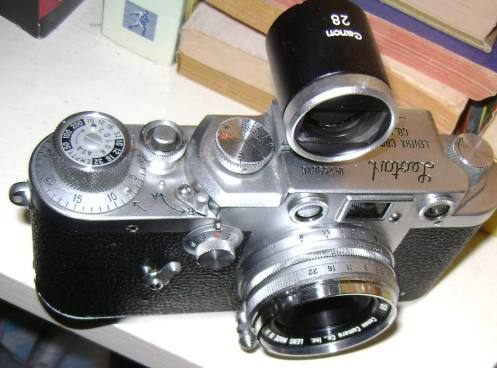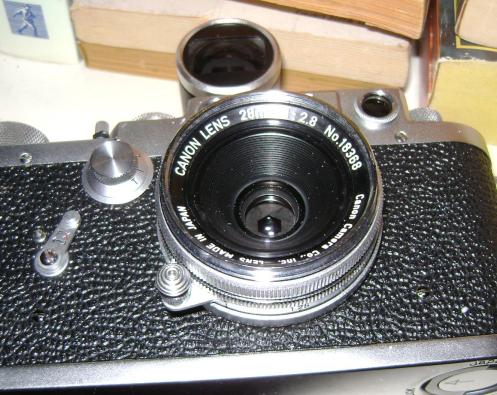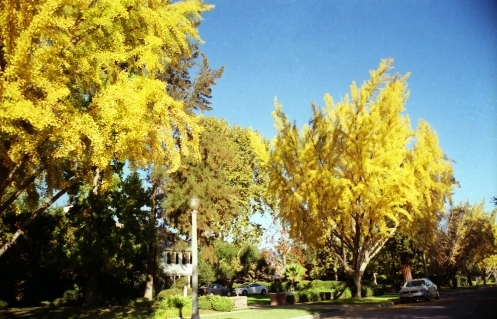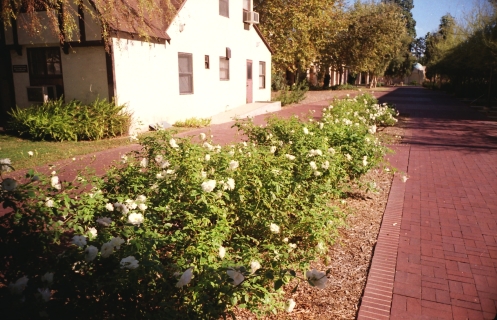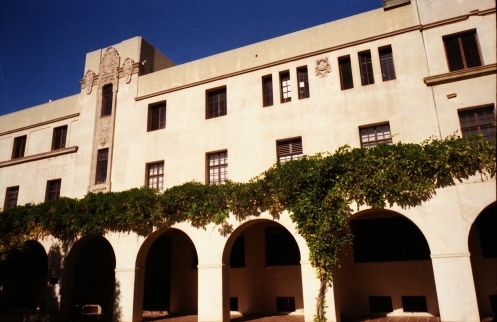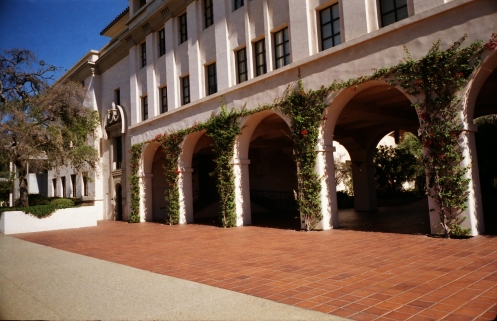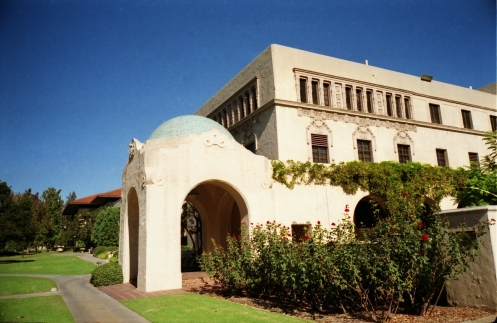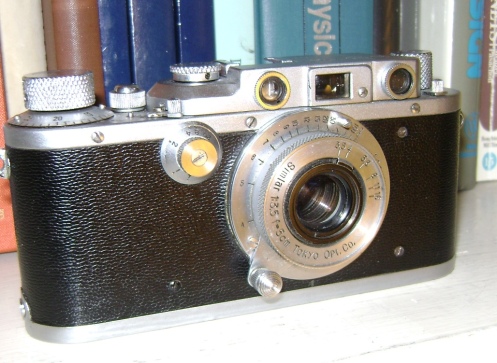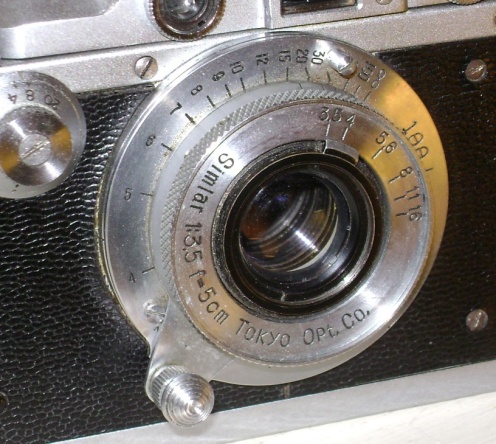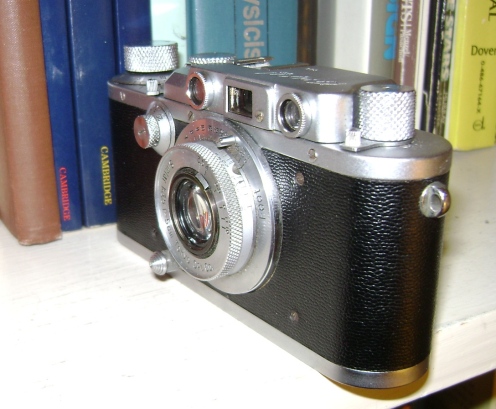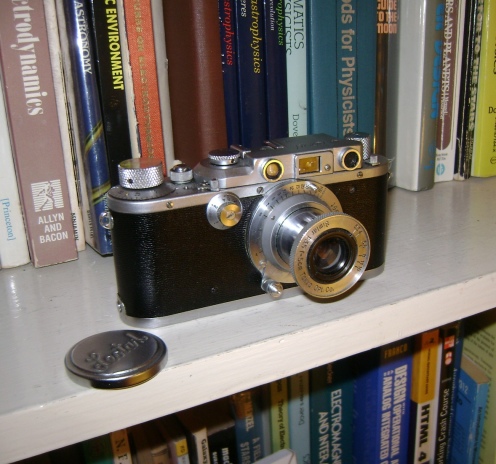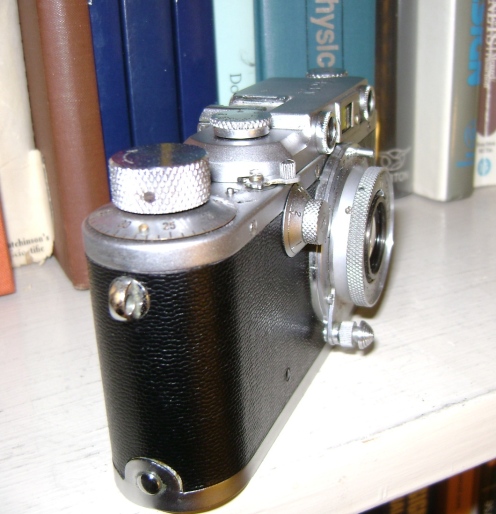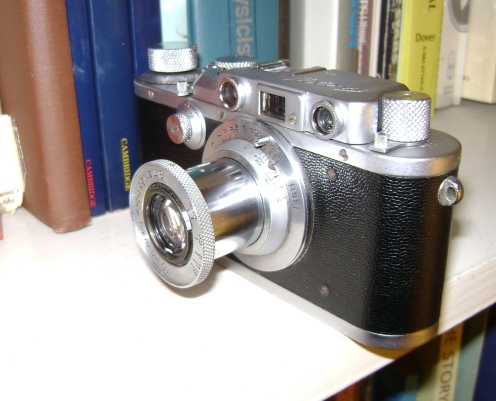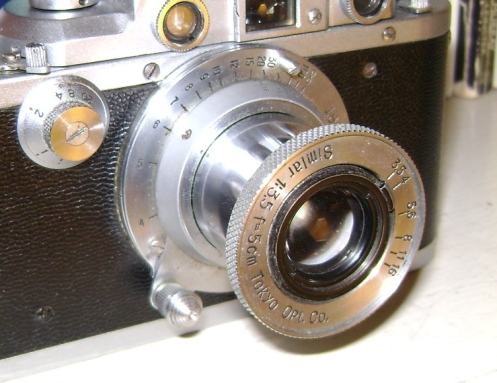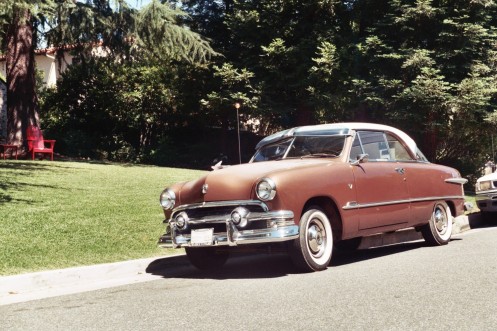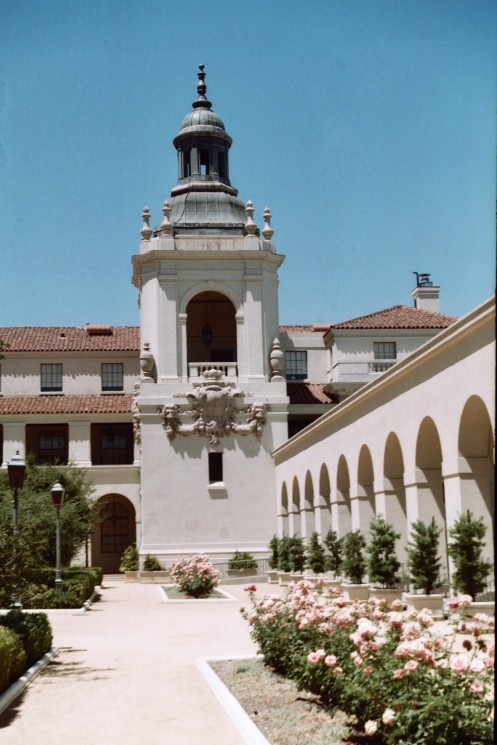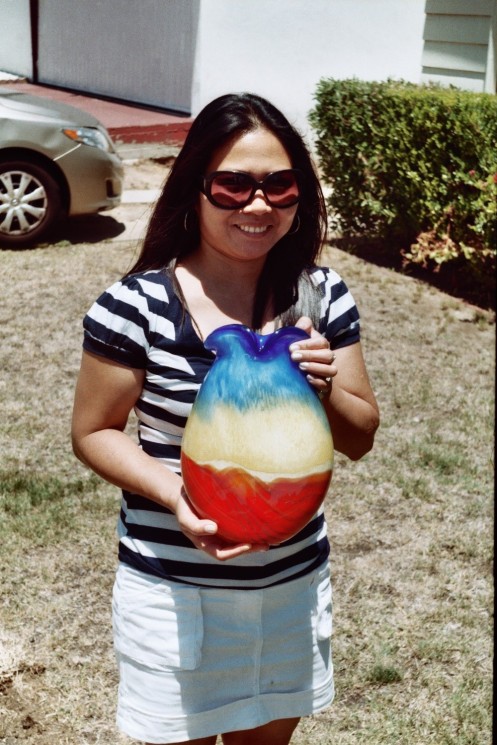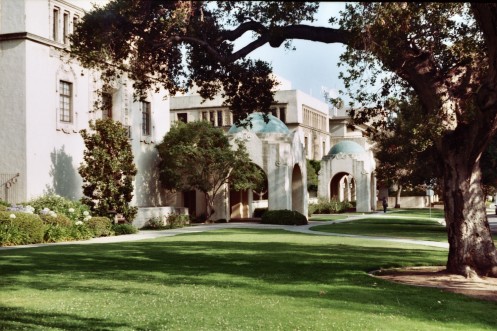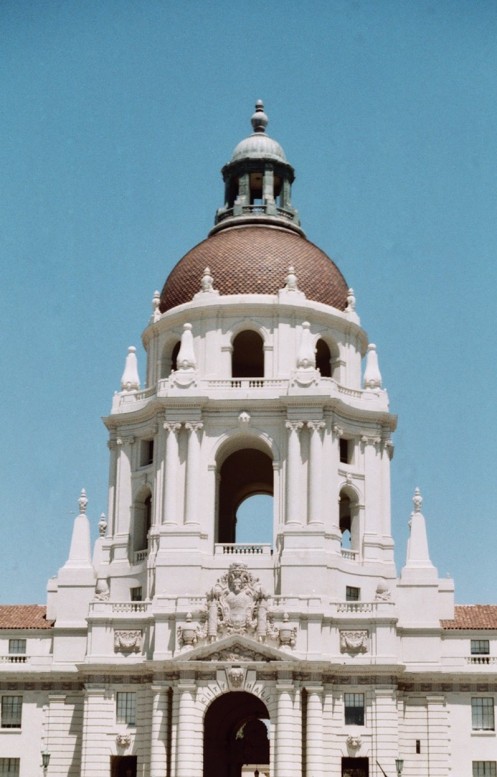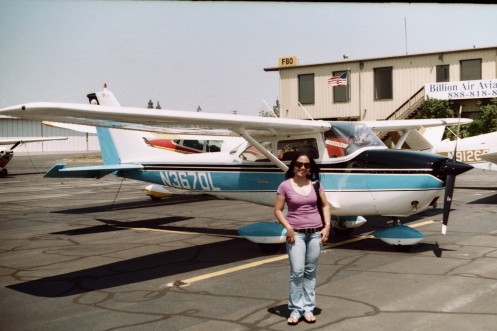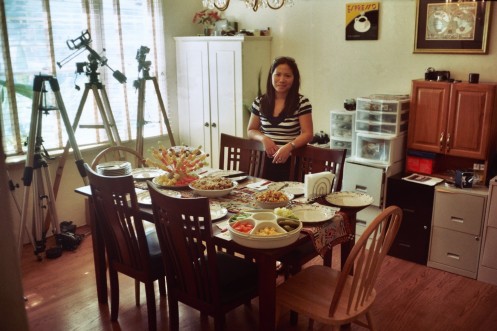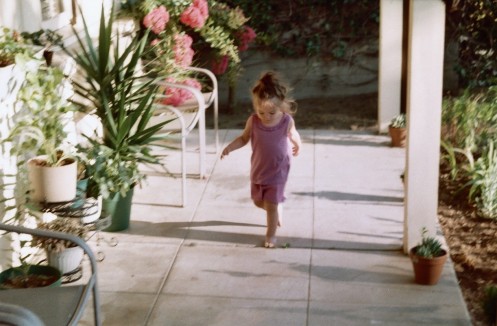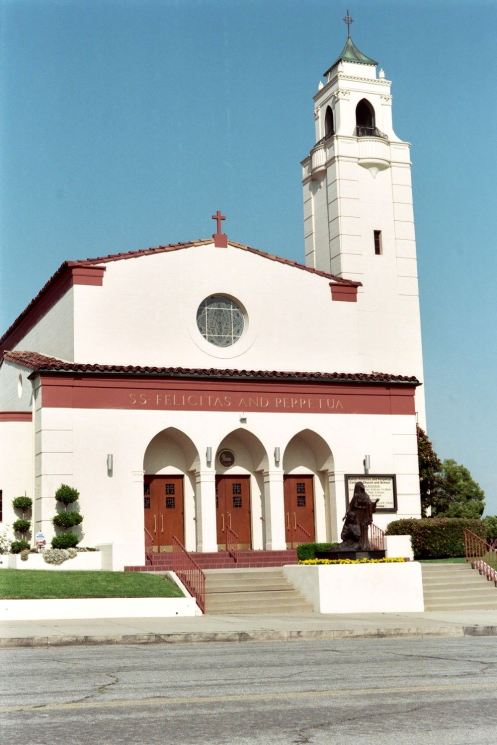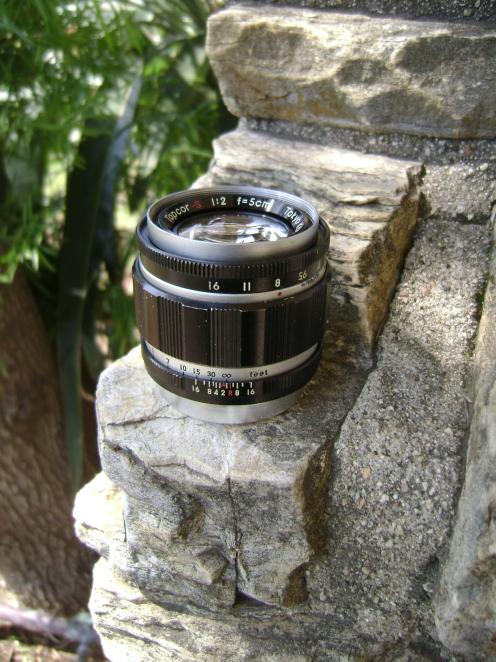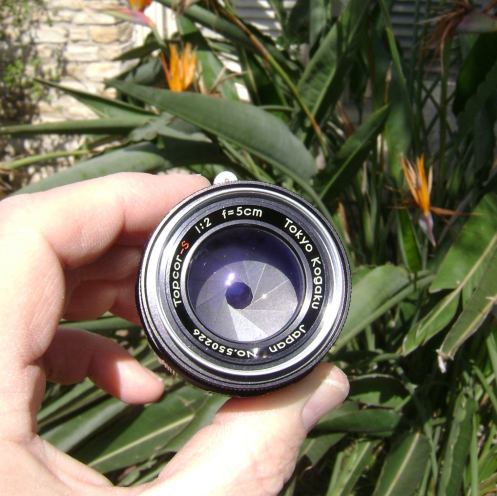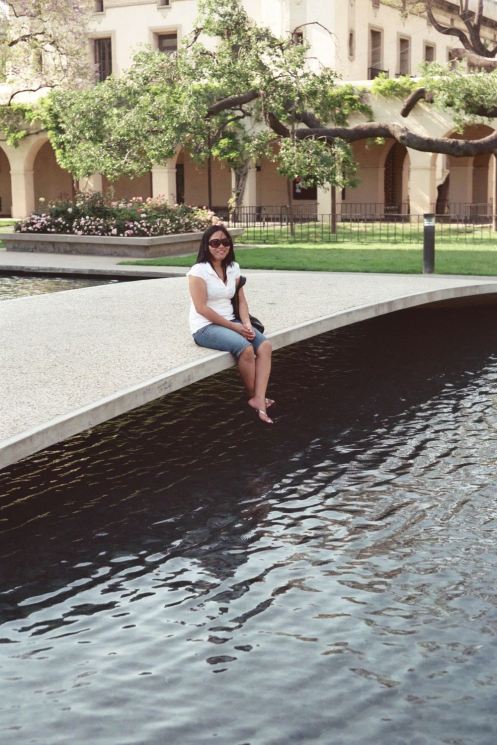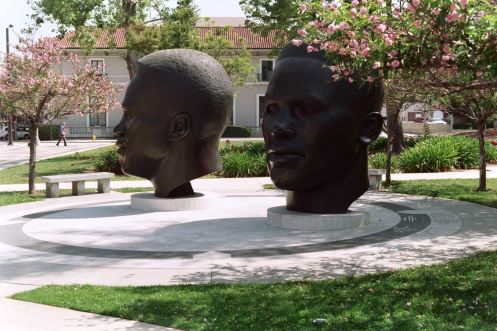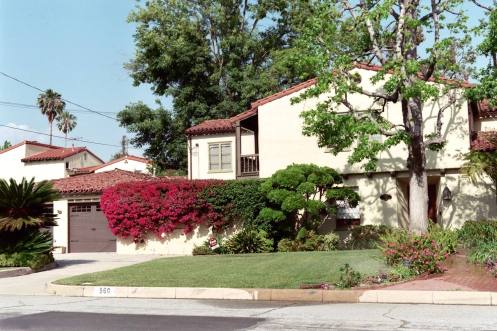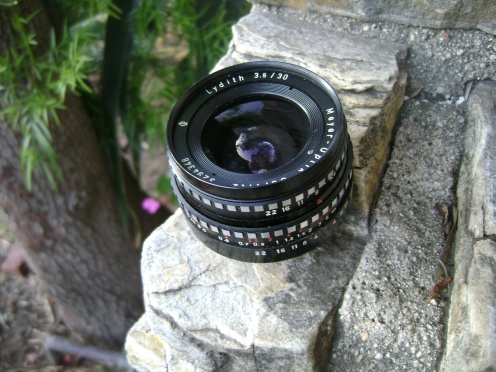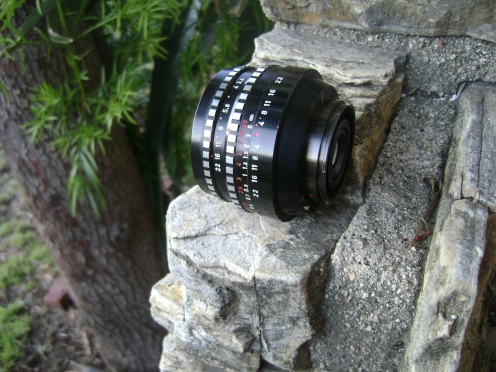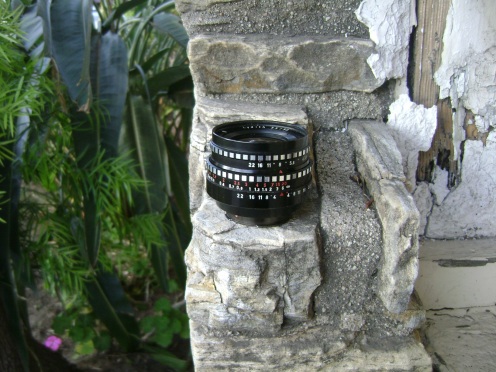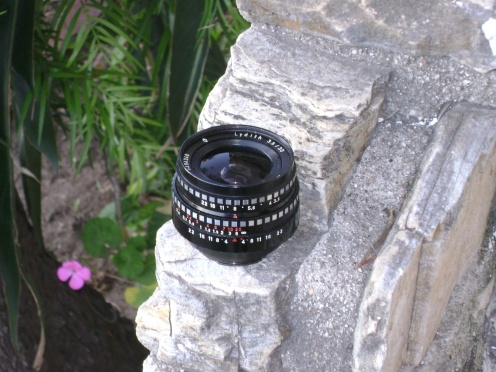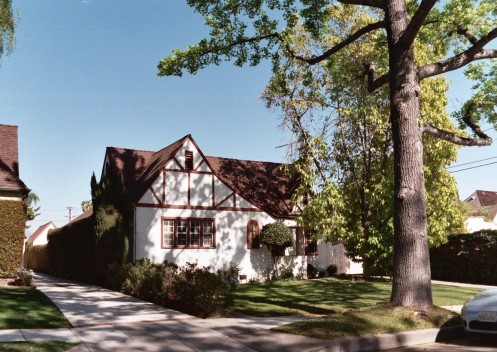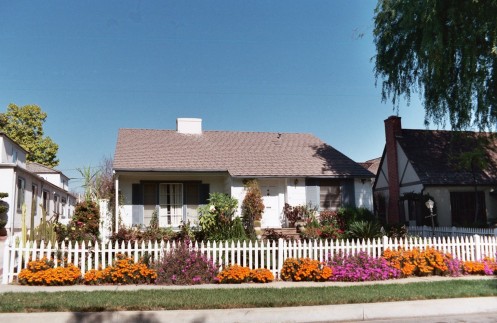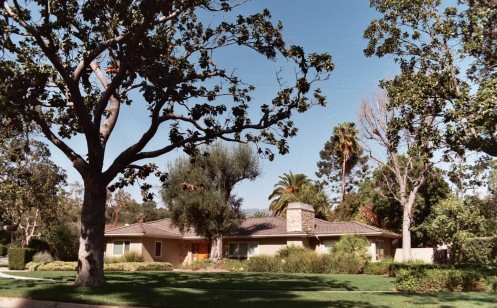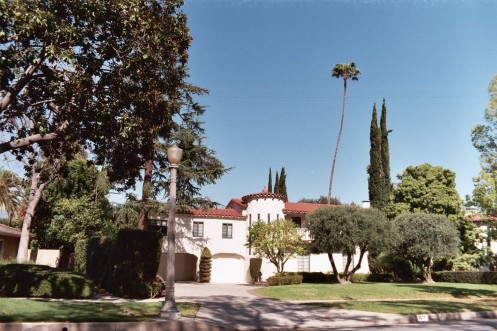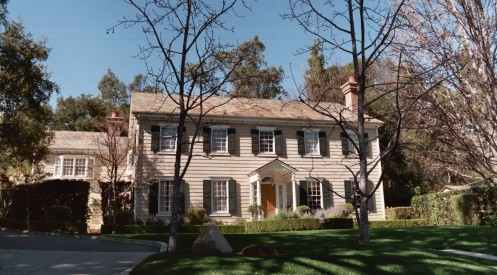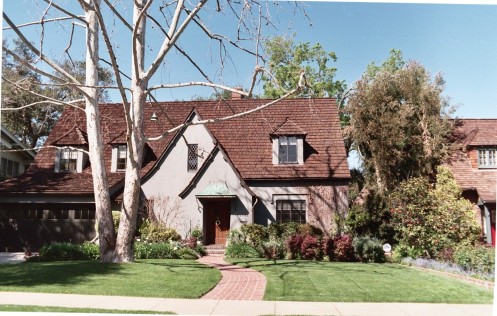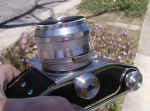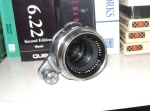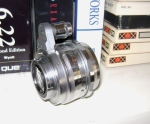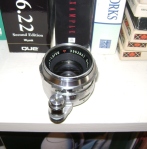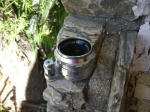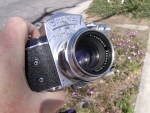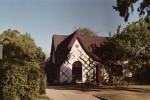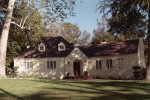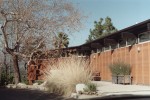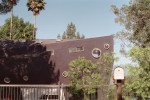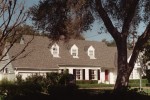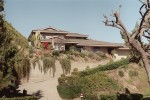I recently had the chance to purchase a Fuji Photo collapsible Cristar 5cm F2 on eBay at a favorable price. I knew nothing about this lens when I saw it for sale, but I did know that vintage M39 lenses from Fuji were all fairly uncommon so I took a risk and bought it right away. As it turns out, the Cristar 5cm F2 is not only uncommon, but actually rare. In fact very little information about it is actually available on the Web, so I will try to relate my experiences (so far) with this interesting lens.
When the lens arrived the glass and cosmetic condition look quite good, but the iris action was frozen so I took it to my camera technician for a CLA and now everything is smooth and normal. Here are some photos of my Cristar (SN# 411331).
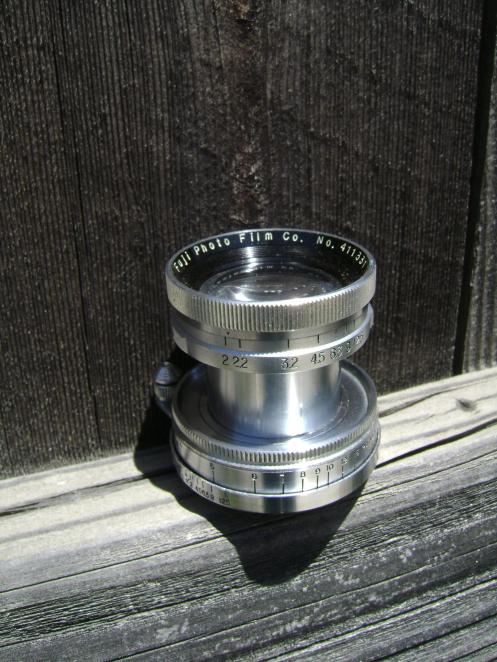
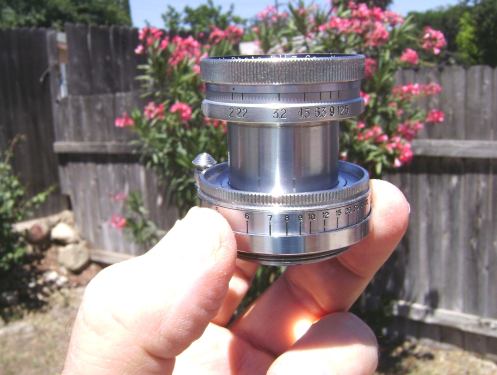
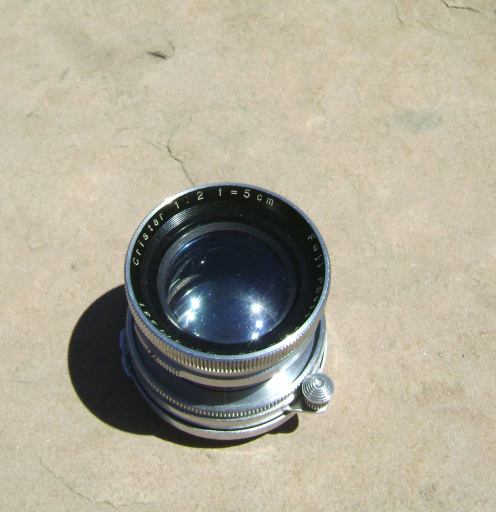
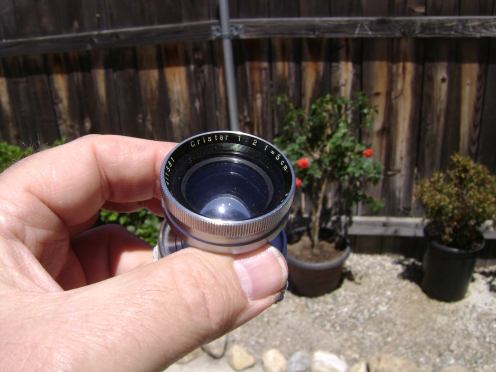
Here are some specs on the Cristar:
Weight: About 7.2 ounces ( 204 grams)
Filter Thread: No thread – Appears to use 42mm slip-on filters, but not verified
Extension from camera body at infinity focus: 1.67″ (42 mm)
Elements: Unkown
Minimum Aperture: F12.5, non-detented stops
One interesting aspect of the Cristar are the engraved iris selections of: 2, 2.2, 3.2, 4.5, 6.3, 9, and 12.5. These are of atypical by today’s standards, which associates this lens chronologically with an era when there were no standard iris setting (perhaps the early 1950’s). Such a fast maximum aperture setting is also consistent with films in use in the early 50’s, which overall were considerably slower than films today. In that era an F2 lens like the Cristar would have been a rather fast lens.
The lens has no front filter thread. I measured slightly less than a 42mm diameter on the outer knurled front ring of the lens, suggesting the use of 42mm slip-on filters. I believe 42mm filters were used at one point by Zeiss for Contax rangefinder lenses, although I think there were some slip-on fittings for at least some versions of the Summitar.
My impressions of the Cristar physically is that it is quite similar to the Leica Summitar which I once owned. In fact one may reasonably assume it is a copy of the Summitar to some degree. We can see there are a number of unanswered questions regarding this lens. Among them are when and how many were made? Were they sold as a stand-along product, or were they made for some particular M39 body? Were there any accessories sold for it such as filters or hoods? Anyone who might have such information is particularly welcome to comment!
Of course another question would be, how does this lens perform? Is it comparable to the Summitar or is it difference. The Summitar was a very sharp lens with a modern character, which in my opinion approaches the performance of its immediate descendant the renowned Leica 50/2 Summicron. To help understand the optical quality of the Cristar, I tested it with my Tower 48 M39 body (also reviewed in this blog).
Here are a few shots taken with Arista 100 and processed with Kodak HC110 (dilution B) and scanned on my Canoscan 8800F. No sharpening of the scanned images was done although I made some slight adjustments to the contrast and brightness in post processing. The exposure times were not recorded, but generally the lens was fairly closed down for the daylight shots, and nearly open (or fully open) for the interior shots (natural light).
I’ll leave it to the reader to make his evaluation of the above snapshots as far as lens performance is concerned, but my impressions are that optically the lens is better than I actually expected. In fact the performance, while perhaps not quite on a par with the Summitar is quite good (see Ken Rockwell’s excellent Web site for a nice review of the Summitar). I plan to do more testing soon and post the results here — perhaps with color film.
I acquired a W. Komura 35mm f2.8 for Nikon rangefinder mount about two years ago and tried it just recently. The lens is in excellent physical and optical condition, except for the fact that it has a small serial identity number hand engraved on the lens barrel. The lens came with the original case, finder, and rear cap.
Here are some photos of the lens mounted on my Bessa R2C, which is a modern Contax rangefinder lens mount compatible camera made in the recent past by Cosina. My Komura 35mm F2.8 was made for Nikon rangefinder mount, not Contax rangefinder, as evidenced by the tell-tale factory N engraving on the barrel.
First here is a photo of the lens on my Bessa R2C followed by images taken with the lens. The film was Agfa ISO 200 color print film professionally processed, and scanned by by Canon 8800F flatbed scanner.
I will post some more data on this lens when I update this blog over the coming holidays.
My apologies to readers of this blog as I’ve been away for a while enduring a career change and other life changes, which have kept me from photo hobbies for the most part. That and the decline of easy and inexpensive to access film processing facilities where I live has slowed down my blogging here. The good news is that I’ve now starting processing my own C41 and black and white film (the last time was in the 1970’s for me) and this will allow me to review more interesting cameras and lenses. Soon I hope to start processing E6 as well, for what is probably the best color experience obtainable on film in our era of declining film use.
Not too long ago I had a chance to obtain the somewhat rare Leonon 5 cm F2. I purchased this from one of the many excellent small sellers on eBay in Japan who deal in this genre of collectible vintage Japanese cameras. These sellers often have quite refined taste in such items, reasonable prices, and excellent customer service (as is typical in Japan). Look for them — there are several and I recommend them!
I’m sure the Leonon 5 cm F2 is more common in Japan than here in the US, but I am sure it is hard to find anywhere, probably even in the era when it was made. It is a good example of the outstanding Japanese photo optical engineering that took place, starting on a relatively small scale, in the 1950’s. A camera lens of this caliber is a non-trivial endeavor, particularly for a small firm, and particularly in the 1950’s. Remember that F2 was considered fast for a prime lens in the 1950’s, and it was expensive. The performance bar had been set by the Europeans, most particularly Zeiss and Leica, so a successful product had to at least approach that level of performance to justify the high price.
From HPR’s great reference book (“Leica Copies”), as best as I can tell the Leonon was sold with the Leotax FV and Elite (T 2L) which were bottom loading rapid wind camera bodies made from about 1958-1961. No more than about 6000 of these cameras were made and they were also sold with the Topcon Topcor 5 cm F2 (reviewed earlier here). Thus no more than a few thousand Leonon’s were made, and I’m sure much fewer exist today. It may not be rare, but it is certainly an uncommon lens! Note that HPR incorrectly calls the Leonon the “Lenon”.
Here are some specs on the Leonon:
Weight: 8 ounces ( 227 grams)
Filter Thread: 40.5 mm
Extension from camera body at infinity focus: 1.6″ (41 mm)
Elements: (5-6 probably)
Minimum Aperture: F22, detented stops
This is a elegantly well engineered lens. It is rather compact requiring only 40.5 mm filters, similar to many Nikon and Contax rangefinder lenses. The mill and lathe work is excellent, particularly the milled focus ring, which is also a different dark brown metallic tint than the rest of the lens which is black and chrome in finish. The engravings are all finely made and fill-painted white, with large, easy to see reference lines for the f-stop settings. This is especially useful when deploying the lens on an unmetered camera body. The lens has a nicely finished chrome plated focus lever without an infinity lock.
The first group of photos are of my particular Leonon, serial number 230733, taken with my point-and-shoot digital camera. The photos that follow were taken on Easter afternoon of 2014 mostly in the old-town center of the town I live in, Upland, California. The place was almost uninhabited that day (the city planners here are trying to revive the town center with limited success). No art is intended here, just a lens test. The film was Fuji Reala X-Tra 400, which is a commonly available and low-priced C41 process color print film from Japan. I developed and scanned the film myself, with mixed results as I needed to color balance out a faint purplish tint, which as I understand it can be due to temperature error in the developer (quite likely as I am not using real sophisticated equipment for this). My color processing skills will hopefully improved with time and allow me to start testing interesting lenses again.
I had the chance recently to purchase a Canon 28mm F2.8 for Leica thread mount compatible rangefinders. This is a rather sought after lens since it is relatively fast for a LTM rangefinder wide-angle lens. Many potential users are drawn to consider the Canon 28/2.8 because of their positive experience using the much more common, but one stop slower, Canon 28mm F3.5 in LTM. Others are seeking a modestly priced wide-angle in Leica thread mount are probably hoping that a somewhat older lens might satisfy their need and perhaps be obtainable at a modest price.
Does the Canon 28/2.8 meet these needs? Well, first of all, inexpensive it is not! Good examples have recently sold for between $350 and $650 on eBay, with prices increasing significantly in recent years. These prices are comparable to the Voigtlander Ultron 28 F1.9 an excellent modern, fast wide rangefinder optic, and are beginning to even approach the lower end of the M-mount Leica 28mm f2.8 Elmarit range. The reason for the high cost is the relative scarcity of the 28/2.8 compared to the more common Canon/Serenar 28/3.5. Contributing to this is the relative scarcity of 28mm lenses in LTM in general, vintage or modern.
Having a bit of experience in optical design myself, I can imagine that the engineering requirements required to routinely design and manufacture a lens of this nature were a significant challenge to optical engineers in the era in which the Leica thread mount systems were part of the mainstream of the photographic world (say 1930-1960). While many examples of faster LTM 28mm lenses were in fact made in this era, most were produced in small quantities and are vanishingly rare, and those easily found today are expensive. By the 1960’s few manufacturers produced LTM lenses in large quantities, wide angle or not, contributing to the dearth of such lenses. More recently users of rangefinders have been blessed by production of a variety of short focal length lenses by Cosina-Voligtlander at modest prices, although the existing quantities are still modest and this company is now producing mostly (if not totally) M mount rangefinder lenses. These factors, together with the unabated passion for LTM collectible lenses of many (including this blogger) has kept the prices of the Canon 28/2.8 LTM high, and I am sure it is likely to get even higher.
My 28/2.8 had been recently cleaned and lubricated (CLA) by a known classic camera expert in Japan for the previous owner (also in Japan). It was, like most Japanese sourced product, in very good condition. On many such lenses one often finds pitting on the chrome as well as glass issues, some of which cannot be surmounted even with a CLA. My 28/2.8 has both excellent cosmetics and very clean and clear damage-free glass.
The basic specs on this lens are covered at the online Canon Museum and other web sites and books so I will not go into excessive detail about these. See for instance:
http://www.canon.com/camera-museum/camera/lens/s/data/19-35/s_28_28.html
Some key virtues of the 28/2.8 are that this lens is light and quite compact. Note that the Canon web site lists the 28/2.8 manufacture date beginning as 1957, a full six years after the debut of the Canon Serenar 28/3.5. This I believe attests to the difficulty of making this lens, the advancement of Canon technologically, as well as the growing public demand for such fast wides at the time.
Here are some digital photos of my Canon 28/2.8 on my Leotax F body with a black Canon 28mm finder. The filter in this setup was a Walz 1A:
Now here are some photos taken with the 28mm F2.8. The camera was the Leotax above and the film was Agfa ISO 100 C41 film. This was processed at a 1 hour local lab where they mishandled the negatives adding fingerprints and dust. I scanned it on my CanonScan 8800F and used the GIMP photo editor to largely clean up the damage to the negatives, as well as to rebalance the color and exposure a bit. These shots were taken mostly at mid-aperture settings (like F5.6 and F8) as I recall. No sharpening was done and the negatives were scanned at 1200 dpi. I’m not claiming to do exhaustive scientific testing here, but just obtaining basic impressions of performance and convenience of use.
My impressions are that this lens is somewhat sharper (at least at mid apertures) than it is often given credit for. It does clearly indicate some noticeable vignetting at the corners, which is quite common in vintage wides and not particularly objectionable to some (including me). I would say the color rendition and contrast are good, but not stunning. I did not use a hood in these photos and that might have improved the results.
My experience using the 28/2.8 wide open is limited, but I did own another example a few years ago and found that it was noticeably unsharp wide open, but my testing was limited and not particularly careful. It is certainly a recommended lens for anyone wanting a compact, beautifully made, and collectible wide-angle lens for use, and it will appreciate in value over the years. I would not recommend the Canon 28/2.8 for the most critical or commercial applications, nor to anyone needing a wide-angle rangefinder lens at a budget price. All said, I can say, as with most Canon rangefinder lenses and cameras (practical considerations aside) that it is a true pleasure to use!
I recently bought a Leotax D IV with a 5cm F3.5 Simlar. The D III is a rare enough camera that I will probably have it CLA’d with new curtains soon, but my main interest in this purchase was the Simlar. I find the combination of a light collapsible lens and a Leica III-type bottom loading rangefinder to be about the best grab-and-go classic camera combination for actual use there is.
The Simlar 5cm F3.5, made by Tokyo Optical (which I think believe is the same company that eventually became what we knew more commonly as Topcon) appears to be a close copy of the Leica 5cm F3.5 Elmar. It heralds from the early to mid-fifties when the Japanese were so effectively copying Leica products as well as those of other German camera makers. Of course the Japanese took this industriousness well beyond copying and at some point and began to innovate on their own, eventually dominating the 35mm camera market world-wide.
The Simlar is collapsible like the Elmar and seems quite similar in all respects. It is not a rare lens, although it is certainly not encountered routinely either. Perhaps two thousand or a bit more were made, and I am sure it was sold mainly with Leotax camera bodies as their economy lens. Of course this level of production is vastly less than the Elmar, or say the Fed 5cm F3.5 from Russia, so it is not a common lens (but still not rare). My Simlar does not have a serial number on it (that I can find at least). The Simlar 5cm F3.5 is usually sold with Leotax camera bodies. One occasionally finds it for sale mounted on other, often rare, Japanese camera bodies for whatever reason. The Simlar is often found in relatively good condition too, although the presence of micro-coating scratches on the front element is common. If these scratches are not too numerous and clustered, they do not impact results. The Simlar appears to accept all accessories of the Elmar (hoods, push-on filters, etc.). It is also a coated lens, a distinct advantage over many examples of the Elmar.
My estimation of the market value of the Simlar 5cm F3.5 is that one in reasonably good condition is worth between $175 and $250. This is based on the few examples I have seen for sale over the last few years, and estimating the lens portion of the value from (mostly) Leotax camera+lens sales. This of course is not extraordinary money, as for example I would for example appraise a good coated Elmar LTM 5cm/3.5 at say $250-350 these days. Thus for a quality collectible prime lens for LTM, the Simlar is reasonably priced and certainly a contender as an alternative to the Leica Elmar.
So how does the Simlar perform optically? Well, I will not directly compare this lens to the Elmar, which is a very fine lens in the opinion of most who have used it (including me). I will say that in my opinion the Simlar is just about as good, and quite remarkable for a copy of such a distinguished lens. My impression is that the Elmar from the same time of the Simlar were made just a bit better; Leica finish quality is very hard to duplicate at reasonable cost, but the differences are evident only to the experienced eye. The Elmar may hold up better with time too, as Simlars more often need a CLA to get them back into top form, although most are usable as is.
Here are some specs on the Simlar:
Weight: 4.5 ounces (128 grams)
Filter Thread: 36mm push-on or A36 clamp-mount
Extension from camera body at infinity focus: 1.18″ (31mm)
Elements: 4 (?)
Minimum Aperture: F16, continuously adjustable
Here are some digital shots of my current Simlar 5cm F3.5 mounted on my fabulous Kardon Civilian. Following this are some shots taken with this combination using Agfa 100 color print film with minimal post-processing and scanned only to moderate resolution. The shot taken in my dining room was taken wide open – the sharpness at F3.5 is quite good for a four element lens.
I was lucky to recently to be able buy a Topcor-S 5cm F2 for Leica Thread Mount from a member on a forum I frequent. The price was reasonable for what it is, but this is not an inexpensive lens, being both uncommon and somewhat sought-after. Photo products from the Toykyo Optical Company (later to be called “Topcon”) were held in high regard even in their early days, the Leica thread mount lenses especially so. Unfortunately only modest numbers were produced.
What I had heard about Topcon Leica lenses (from reading the limited information on the Web), were that they were lenses particularly sharp for 50’s era optics and indicating an high degree of optical design skill on the part of Tokyo Optical. This would certainly be in accord with the experiences of users of their SLR lenses, although those with direct experience using the collectible Leica versions is not easy to come by. With the Topcor 5cm F2 I also purchased a 5cm F3.5 from the same owner, but I sold this lens before I could do adequate testing (holding on to these rarities gets expensive – while my impressions of the 5cm F3.5 were quite positive, I’ll leave reviews of this to others).
There are, it seems, two versions of the Topcon 5cm F2 in existence today. One has a black finish and the other chrome.
The Topcor 5cm F2 was sold with the Leotax series of rangefinder cameras from about 1954 till about 1961, available on the F, T, K, FV, TV2, and T 2L models according to the reference Leica Copies, by HPR. On the earlier F and T models pictured in HPR’s book, the 5cm F2 Topcor has a chrome finish on later models it has a black finish. The two versions of the lenses also look different in the placement and design of controls, so are very probably different internally as well, but I have no idea how different. My black finish later production model reviewed here has very much the look and feel of a typical modern fast prime.
I do not know if the Leica thread mount Topcor lenses were sold as separate products. Of course I also do not know how many of the 5cm F2 Topcors were made, but several thousand of the Leotax bodies that offered them as options were made. My guess is that the Topcor 5cm F2 is somewhere between rare and uncommon these days. Although several thousand Leotax’s were made, most were probably purchased with the slower less expensive lenses then offered, and I am sure many more have been simply discarded or otherwise lost over the years. Both the chrome and black Topcor 5cm F2 appear for sale on eBay from time-to-time, sometimes together with cameras, sometimes not, but usually at quite high prices (say $500-$1000).
Here are some specifications for the Topcor taken from my own measurements:
Weight: 9 ounces (255 grams)
Filter Thread: 40.5mm
Extension from Camera Body at Infinity Focus: 1.62″ (41mm)
Elements: Seven
Minimum Aperture: F16, click stops
My conclusion that this is a seven element lens is from the “S” designation of the name, presumably referring septem, or seven in Latin. My impressions of the build quality are that it is good, but not overwhelming so as with a slightly earlier generation of Leica thread mount lenses from Japan and Germany. I would compare it mechanically to the later Canon series of Leica thread mount lenses. The focus has a nice lever on it, but without an infinity lock. My example is in good shape, except for some mild resistance on the iris action which I will take care of shortly with a CLA.
My photos taken with the lens were with my Tower 48 LTM body using common ISO 200 color print film and scanned at moderate resolution. The photos of the lens were taken with my point-and-shoot digital camera.
The Meyer Lydith 30mm F3.5 is certainly a common lens for Exakta, and one that is fairly well-known. It was heralded towards the end of the last decade as an under-appreciated gem by Ivor Mantale, the well-known British author of classic camera books (and now eBay photo dealer). The Lydith 30mm evolved eventually to the Pentacon 30mm F3.5, as the East German camera industry consolidated not long before its eventual disappearance. Like many Exakta lenses, M42 versions were made as well.
The Lydith, it seems, was made only as a purely manual lens as far as the iris mechanism was concerned. I have read that there were no automatic versions. This most likely was due to the fact that the Lydith, like many Meyer lenses for Exakta, was an “economy lens” exemplified not only by its simple mechanical construction, but also by the fact it only has five elements.
Here are some specs on the Lydith:
Weight: 7 ounces (198 grams)
Filter Thread: 49mm
Extension from camera body at infinity focus: 1.54″ (39mm)
Elements: 5
Minimum Aperture: F22
My impressions of this lens (as far as build-quality is concerned) are in line with the expectation that it was a mass marketed economy wide-angle for the apparently rather large world-wide base of Exakta users at the time. The iris does not have click stops. The control rings exhibit rudimentary machining and metal work, as was not uncommon for East German-made lenses of the era. The lettering of the controls (aperture stop markings, focus markings, DOF scale) is adequate, but hardly inspiring, and not nearly as clean as say any similar Japanese-made lens of the time. One can almost say there are small paint defects – minor, but evident. A Japanese lens would never have left the factory in such condition. On the more positive side, the Lydith is quite light and fairly compact making it a good lens to travel with.
So a lens with mediocre build quality and as wide and fast as 30mm F3.5, implemented with only five elements, should really make a losing proposition performance-wise, right? Nope! This is the astonishing thing about the Lydith. The Lydith exemplifies an odd trait that I have found common to several East German lenses: marginal build quality (by Western standards) coupled with excellent optical performance. In fact it really shines in my opinion, and like with many others it has become a favorite wide on my Exakta.
The lens is quite simply razor sharp and contrasty at mid to closed-down apertures, really on par with modern lenses of similar focal lengths except perhaps regarding distortion (which I’ve not really studied in enough detail to comment on authoritatively). The following photos are of my Lydith followed by examples taken with it on my Exakta VX using ISO 200 color print film from the 99-cent store processed and scanned at a local discount store (Target). These shots with the Lydith were taken at aperture settings ranging from about F5.6 – F16.
Having recently renewed my interest in the Exakta system, I decided to select a 50mm lens to use on my Exakta VX. The most common of these available in circulation seem to be the Tessar 50/2.8, the Pancolar 50/2, The Pancolar 50/1.8, and the Biotar 58/2. Having used Tessars and the Pancolar before, I was searching for something a bit less common, yet fitting for the era in which my VX was made (early 1950’s). Many of the faster standard lenses for Exakta once readily quite available are now collectible, and not that easy to find, an example being (for instance) the Steinheil Quinon 55mm F1.9 whose price today can seriously dent your wallet! Another slightly more common, but a bit more affordable candidate (at least as I write) that met my needs was the Schneider Xenon 50mm F1.9. I managed to purchase one with an Exakta body at a price that was reasonable. The lens was in usbale and fairly good shape, but a subsequent CLA restored it to good working order in all respects!
Some specs on the Xenon 50/1.9:
Weight: 14 ounces (397 grams)
Filter Thread: 46mm
Extension from camera body at infinity focus: 1 7/8″ (48mm)
Elements: 6
Design: Double Gauss
Minimum Aperture: F16
My main impression of this lens is that it is heavy (it is), but solid as a rock in build quality. If feels in some respects like the early versions of the Leica Summicron. I assume it is primarily constructed of steel, based on its weight and rigidity. The iris has click stops and the iris action is automatic in the Exakta scheme whereby the initial light press of the shutter release stops the lens down to allow DOF and open aperture composing.
Here are some photos of the lens taken with my digital camera followed by photos taken with the Xenon. Click anyone of them for a larger view. The camera used was an Exakta VX and the film was ISO 200 color print film purchased at the 99-cent store. The film was processed and scanned at the local “Target” department store:
